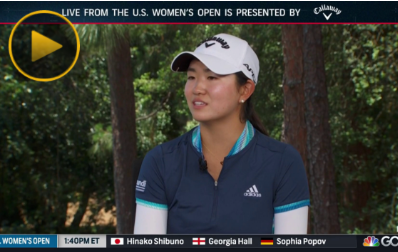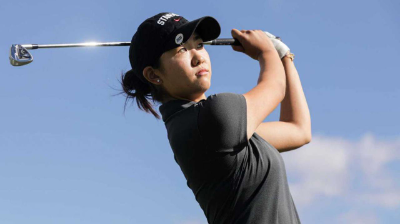
Golf is, by nature, a numbers game. Total strokes, driving distance, even the identifying marks on golf balls and clubs, are all numbers. Laptops and launch monitors are now commonplace on PGA Tour practice ranges.
And much like it has in other sports, the cold, hard data will begin to have an increased impact on golf.
The PGA Tour’s ShotLink system can measure virtually every shot hit on Tour to within inches. The capability to capture such detailed information makes possible the creation of advanced statistics that alter the way we view the on-course action. A new putting statistic, called ‘putts gained,’ will soon be unveiled, giving us a better way to measure the Tour’s best performers on the greens
In response to such trends, the Massachusetts Institute of Technology’s Sloan Sports Analytics Conference held the first Golf Analytics panel in the conference’s 5-year history to discuss potential applications of advanced statistical analysis in golf. We’ve seen numbers-crunchers change baseball, basketball and football. Golf could be next.
The Sports Analytics Conference may sound only slightly cooler than a Star Trek convention, a place for geeks to discuss sports instead of Spock, but it has become important enough to attract some of sport’s heavy hitters.
Author Malcolm Gladwell, former NBA coach Jeff Van Gundy, Indianapolis Colts president Bill Polian and Dallas Mavericks owner Mark Cuban, who strolled the halls in a T-shirt that read, “Talk Nerdy To Me,” were there, in addition to executives from several other teams.
Analytics, the science of logical analysis, has become commonplace as sport has turned into big business. With increasing amounts of money at stake, teams in several sports have turned to this quantitative, numbers-based decision making to replace subjectivity and intuition.
Interesting studies were presented that could impact how we evaluate talent and develop potential players. Gladwell spoke on the “10,000-Hour Rule,” which attempts to quantify the amount of time necessary to master a task. Roger E. Hall, CEO of Achievement Metrics, illustrated how his company uses computer algorithms to identify the speech patterns that differentiate between groups of people, including amateur stars that succeed and fail as professional athletes. Shea Balish, of Queen’s University in Canada, presented research that showed how those who learned a task implicitly (unconscious, non-declarative, i.e. play) perform better under duress than those who learn a task explicitly (conscious, declarative, i.e. formal instruction).
Analytics never will allow us to predict the winner of a golf tournament with 100 percent certainty. It never will guarantee that a certain college star will become a major champion, or that one of his peers is destined to a career on the Nationwide Tour. There always will be exceptions to the conclusions reached through quantitative analysis, but that doesn’t mean it should be dismissed. Analytics provide a new way to evaluate what we see.
“Putts gained” is scheduled to be unveiled later this year. The new metric will evaluate the value of each putt made. Simply put, if a player holes a putt from 30 feet, a distance from which the PGA Tour averages 2 strokes, he’s gained a shot on the field. If he misses an 8-foot putt, he loses half of a stroke. Players can be ranked based on the average “putts gained” per hole.
The old putting statistics were unreliable measures of skill because they put excessive value on prior shots. A player who missed a lot of greens often took fewer putts per round because his chip shots to the green left shorter putts than if he’d hit the green with his approach shot. Putts per green in regulation was too dependent on the length of a player’s birdie putt.
ShotLink also can change the way we view golf. Kin Lo, the PGA Tour’s director of research and development, theorizes there could be a day when we see a player’s probability of hitting a green or making a putt displayed on-screen before he attempts a shot, similar to what we see in poker.
“(ShotLink statistics) facilitate a much deeper understanding of what’s going on and how players are performing,” Lo said.
The more-detailed data allows deeper analysis of the game, from which everyone from professionals and amateurs can benefit. Two University of Pennsylvania professors used the ShotLink statistics to prove how “loss aversion,” the tendency of people to strongly prefer avoiding losses over acquiring gains, was detrimental to players’ putting.
By analyzing ShotLink data, the Wharton School of Business’ Devin G. Pope and Maurice E. Schweitzer found in 2009 that players make 2-4 percent more par putts than birdie putts of the same distance, and were more likely to leave birdie putts short, even when controlling for position on the green and other variables.
Their conclusion: players invest more focus into par putts in order to avoid a loss, in this case a stroke in relation to par. They are more cautious on birdie putts, in spite of the opportunity to gain a stroke in relation to par, in order to ensure making par. A rational actor should treat all putts the same, regardless of whether they’re for par or birdie. They estimated that if a top-20 player in 2008 was able to overcome this bias, he could increase his earnings by more than $1 million.
Further proof that a new form of analysis can have great benefits.
By Sean Martin
























